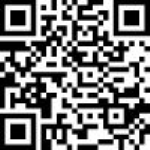數學低成就學習動機之類型與區別分析:中小學弱勢學生與一般學生之比較
作者:李宜玫(國立臺北教育大學心理與諮商學系)
卷期:57卷第4期
日期:2012年12月
頁碼:39-71
DOI:10.3966/2073753X2012125704002
摘要:
本研究目的在比較與分析低成就學生數學學習所呈現的不同動機類型,以作為弱勢學生補救教育的評估與學習輔導之參考。取樣依照地區與學校規模分層抽樣新北市中小學,先選攜手班的弱勢生,再請原班導師協助,參考上學期數學總成績以及同性別的一般生進行配對取樣,共得有效樣本764人(男426人、女338人;一般生428人、弱勢生336人)。測量工具為自我效能、期望成功、知覺難度、內在動機、逃避策略、堅持與自制力七種變項。透過二階段集群分析、區別分析、獨立樣本變異數分析與卡方考驗進行統計分析。結果顯示:一、所有學生可以區分並命名為樂在其中、隨性鬆散、習得無助、穩定謹慎等四組;二、區別分析可得兩種函數,分別命名為「內評情感」與「外評意志」,可以有效區分上述四組學生;三、弱勢學生和一般學生在「樂在其中」與「隨性鬆散」兩種類型中的比例有差異存在。綜而言之,本研究分析與比較低成就學生數學學習動機四種不同類型,並建議補救教學教師據以區辨弱勢學生的數學學習動機,並能強化隨性鬆散型學生養成自我管理的學習習慣,以及提供習得無助型學生更多的心理支持。
關鍵詞:弱勢學生、區別分析、集群分析、數學學習動機
 《詳全文》
《詳全文》

Journal directory listing - Volume 57 (2012) - Journal of Research in Education Sciences【57(4)】December
Discriminating Math Low-Achievement Motivation Patterns: Comparing Disadvantaged and Other Students in Elementary and Junior High School
Author: Yi-Mei Lee(Department of Psychology and Counseling, National Taipei University of Education)
Vol.&No.:Vol. 57, No. 4
Date:December 2012
Pages:39-71
DOI:10.3966/2073753X2012125704002
Abstract:
This study assesses math-avoidant motivation patterns of disadvantaged students to determine whether they require remedial education and learning guidance. The study includes 764 elementary and junior high school students (426 male and 338 female, and 428 normal and 336 disadvantaged). The students were sampled by region and school size in Taiwan. These students completed the Math Avoidance Motivation Scale, including variables measuring “self-efficiency,” “expectancy of success,” “perception of difficulty,” “intrinsic motivation,” “avoidance strategies,” “resistance,” and “self-control.” Two-stage cluster analysis, discriminant analysis, analysis of variance, and x2 (chi-square analysis) were used as statistical methods. The results of the study show that students are divided into 4 clusters: enjoyment, permissiveness, helplessness, and carefulness. Discriminant analysis of the 7 observed variables identified 2 functions: affection and conation. These 2 functions differentiate between the 4 student clusters. The results also show that differences occur between the proportion of enjoyment and permissiveness clusters in the disadvantaged and normal student groups. This study explores 4 math avoidant motivation patterns and proposes that teachers recognize student styles. Teachers can encourage permissive students to form self-governing learning habits and support helpless students psychologically with remedial education programs.
Keywords:disadvantaged students, discriminant analysis, cluster analysis, math learning motivation